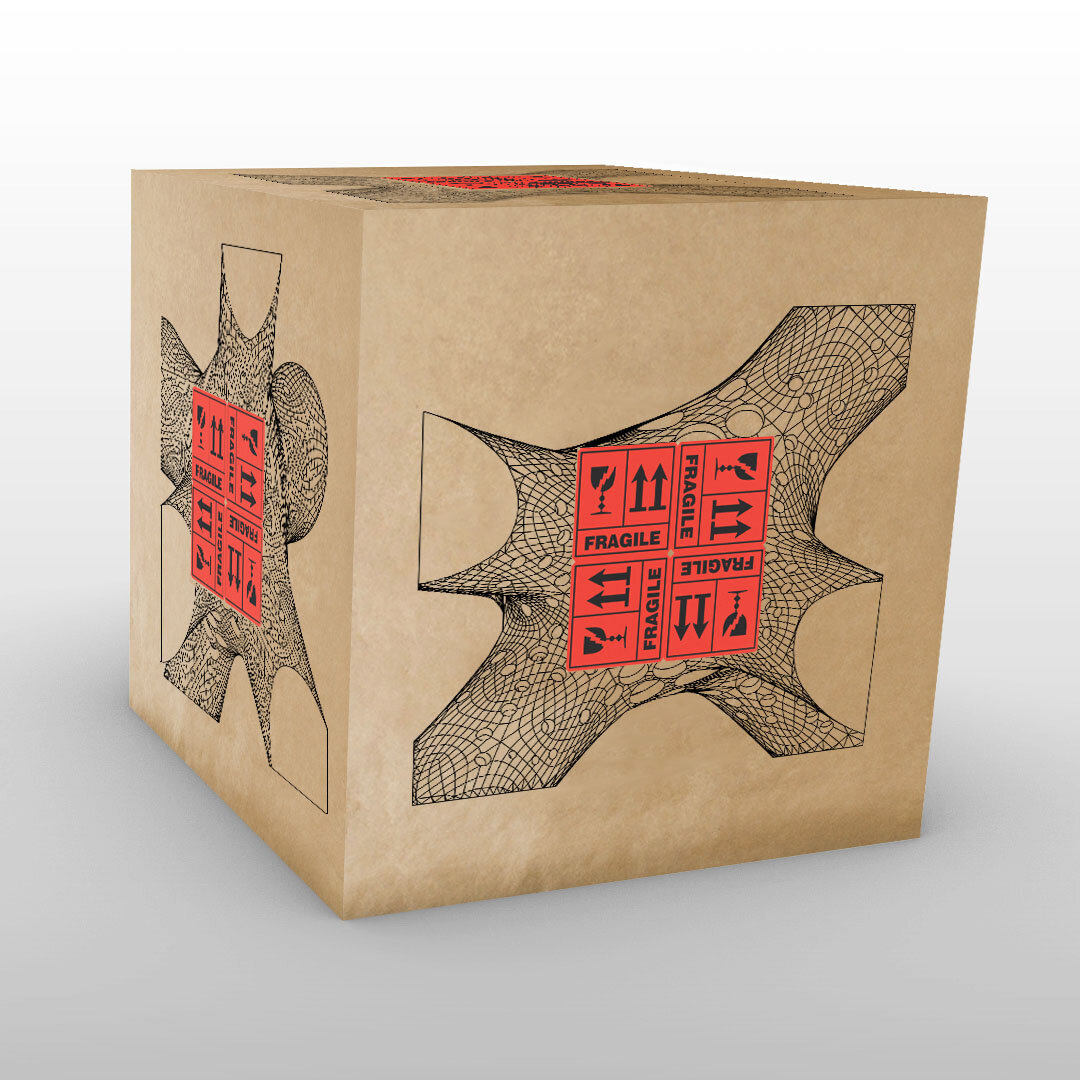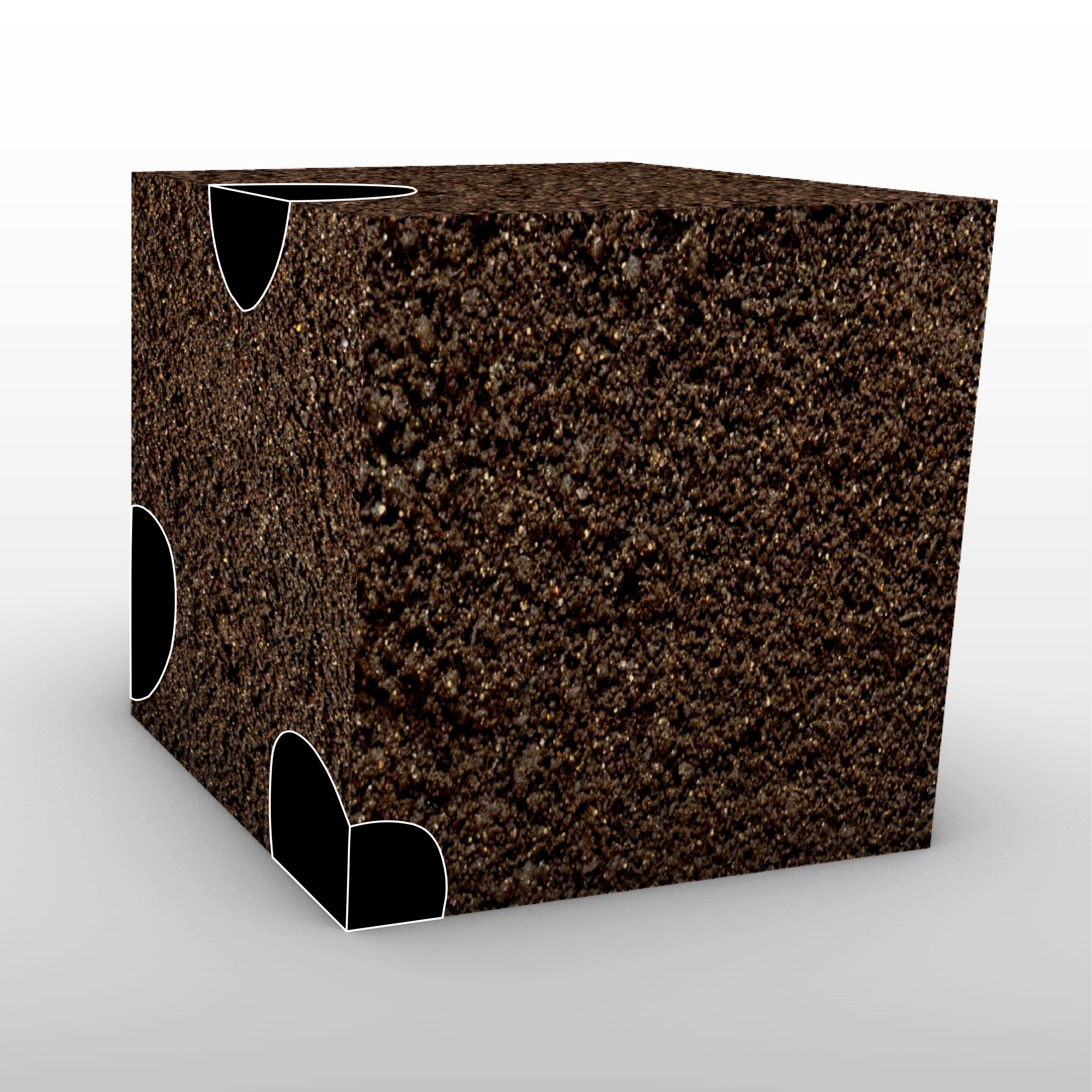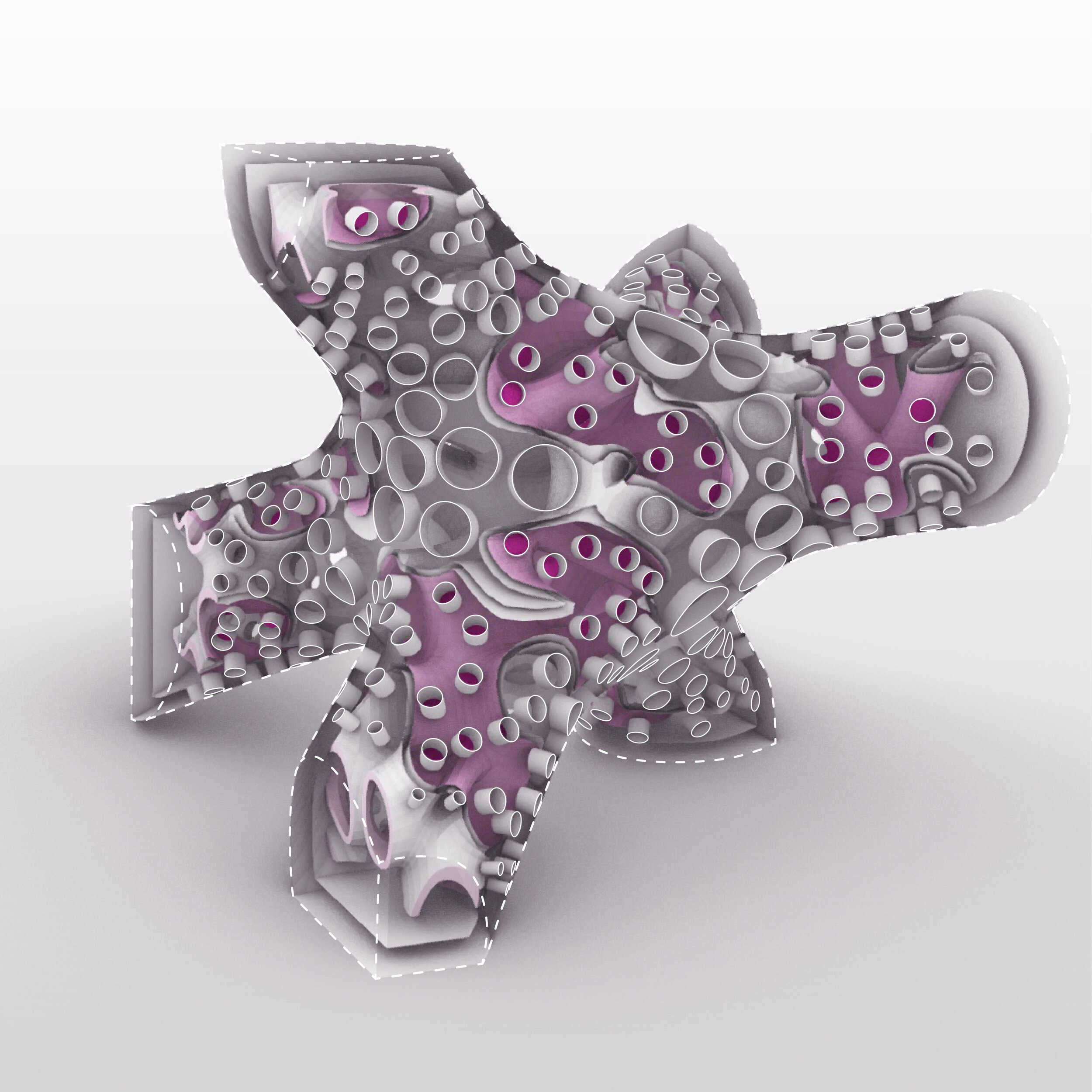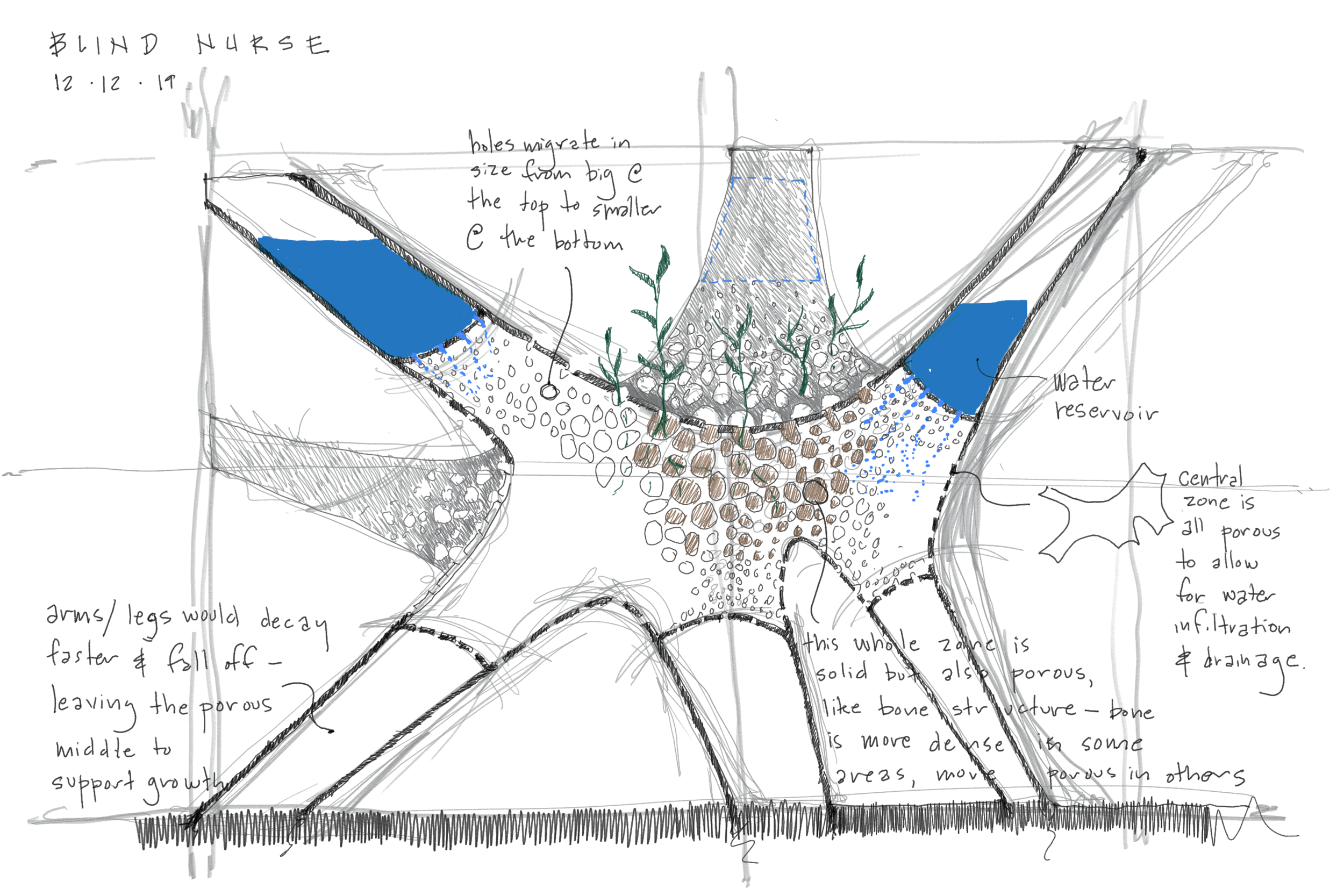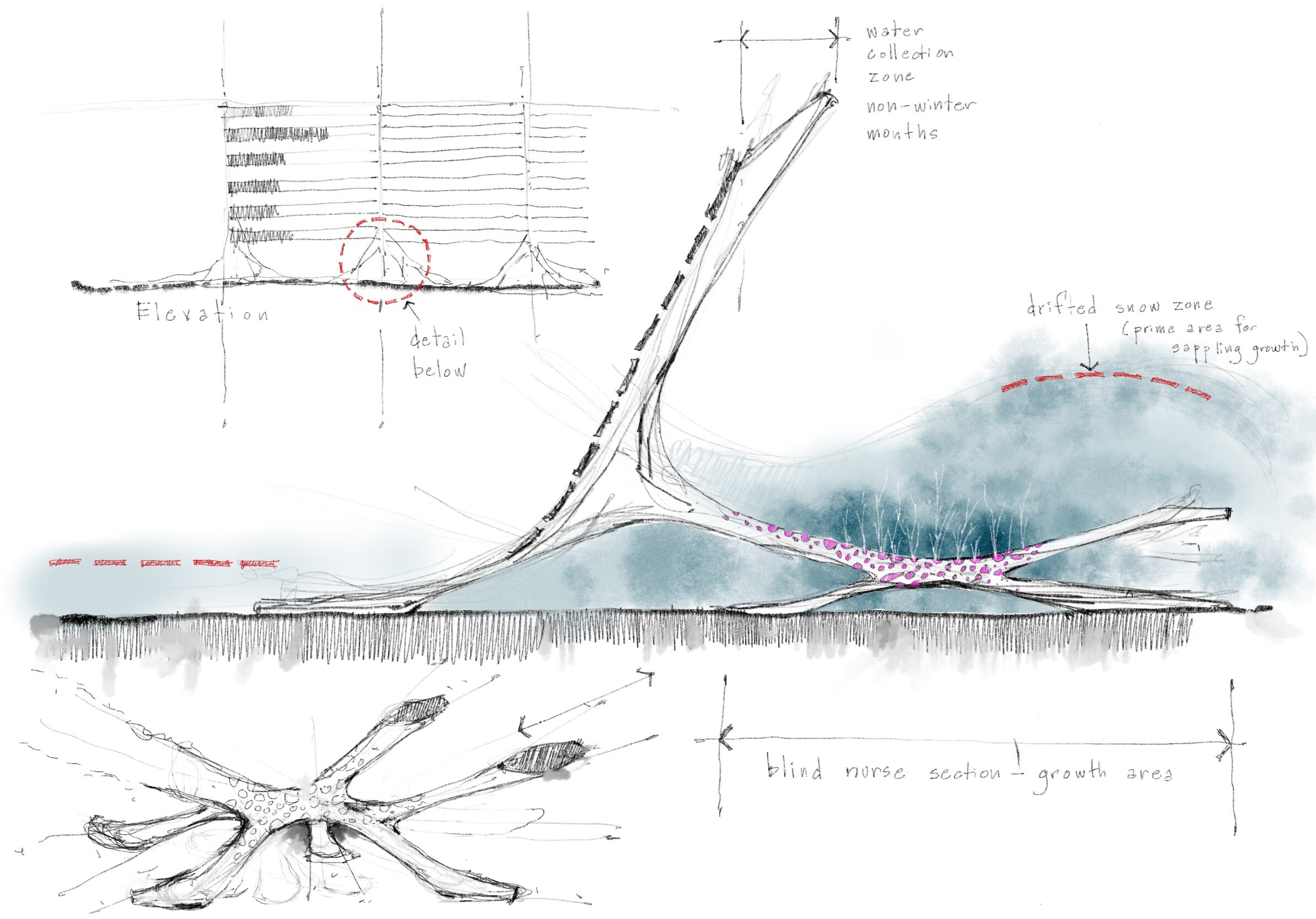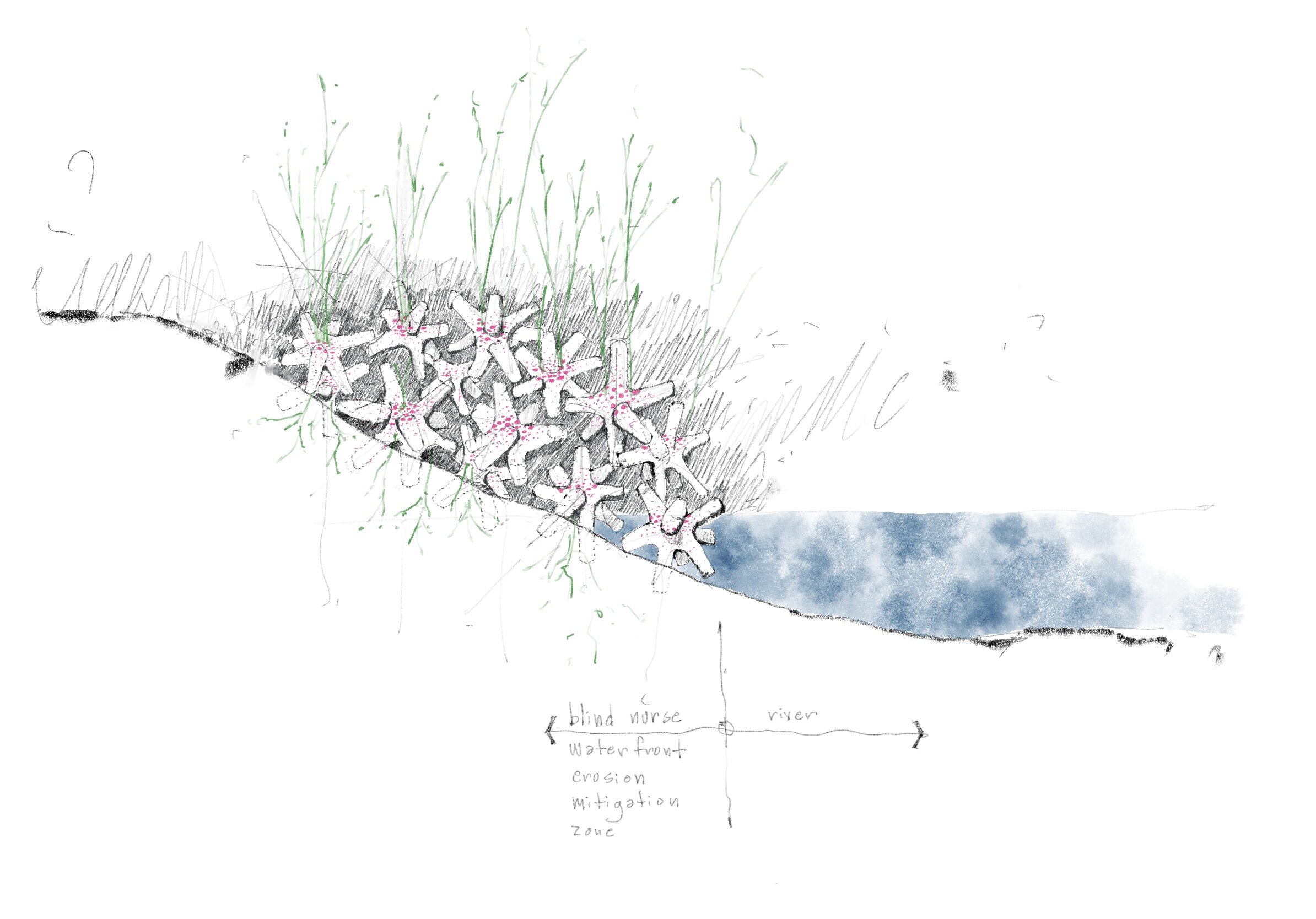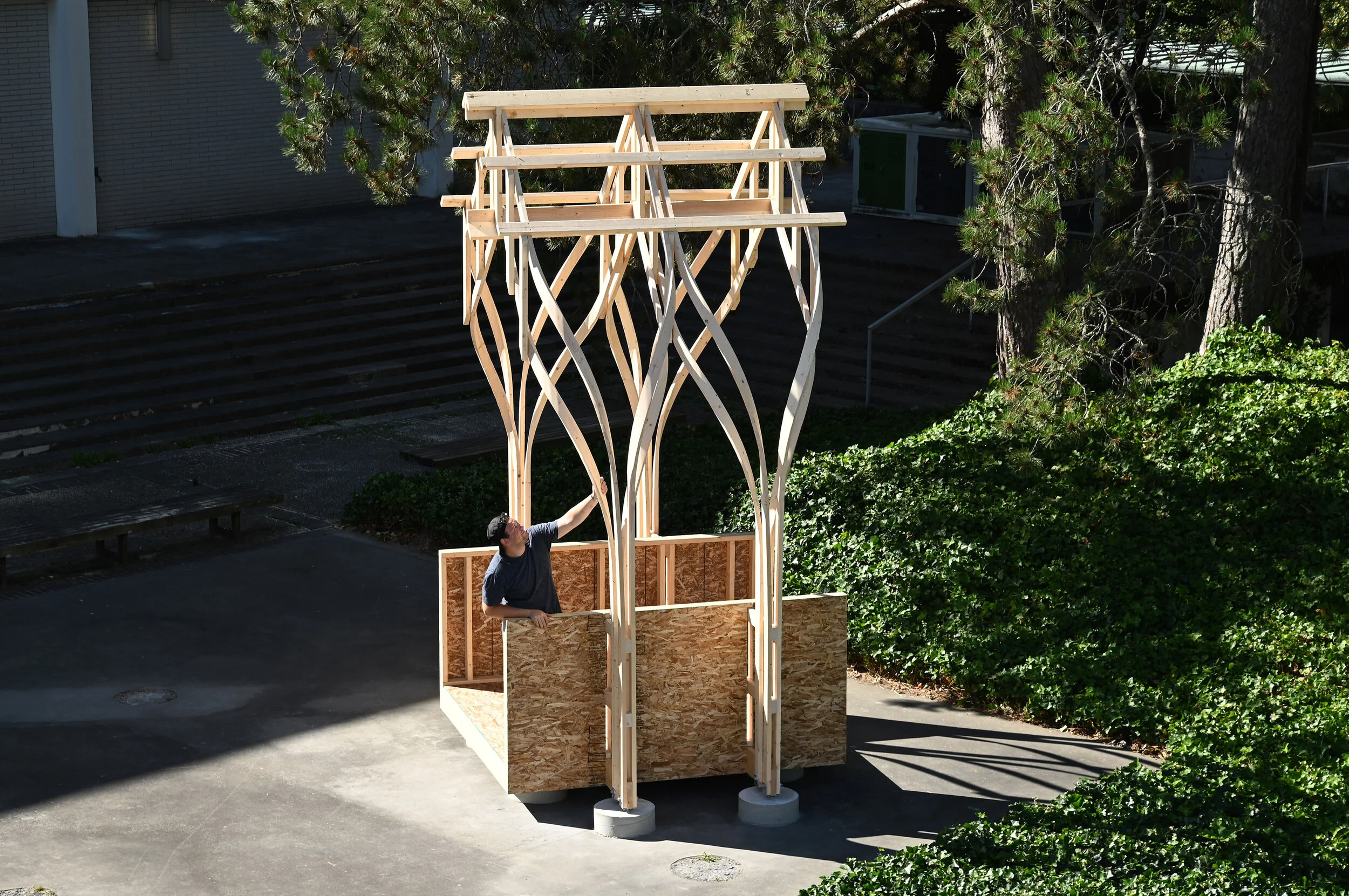Blind Nurse 2.0
When architects consider a building’s decay as carefully as they do its design and construction, they accept that architecture is fundamentally part of our larger natural ecosystem, that it is not distinct from nature, but part of it. The Blind Nurse project points to a scenario in which architecture can participate more fundamentally in the natural cycles it often ignores. A building’s obsolescence can be as thoughtfully considered as its construction. The Blind Nurse combines the blind box (chance) and nurse log to emerge as a thirty-inch cube of soil, enriched with tree seeds, and delivered in a thin paper wrapper. When placed outside in the elements, it erodes, gradually revealing a hidden object inside. Each hidden object in the Blind Nurse series is unique, three-dimensionally printed from biodegradable lignin and shaped to anticipate the growing needs of a tree species.
The project is deep in the prototyping phase and is being tested at a variety of scales. We have added an ecologists and biologists to the team. We are working to optimize the nurse, testing for criteria ranging from material behaviour and fabrication, to assembly and ecological impact. The current iteration of the Blind Nurse is being tailored to perform in Colorado’s Rocky Mountains. We imagine deploying the as part of remediation strategies (a snow fence or reinforcement for a stream bank as example).
Blind Nurse models how architects might expand their agency. It points to a strategy in which they might consider decay as a seed for future growth. It offers a scenario in which architecture can participate more fundamentally in the ecological cycles it often ignores. It asks questions like: If a building’s obsolescence can be as thoughtfully considered as its construction, what might this mean for that building’s conceptualization? What might it mean for its detailing and material selection? How might it lead to a deeper and broader engagement with its users, and with the environment?
Project lead phase 2: Matthew Hayes (LoDo Lab)
Phase 1: Jason Heinrich, Neal Qiongyu Li, Robert Thomas Gaudin (HiLo Lab), “Mir” Yong Gyun Noh (UofMn)
This project is a collaboration between the LoDo Lab, HouMinn, and HiLo Lab.
